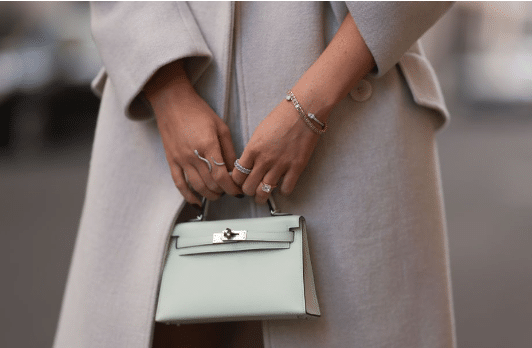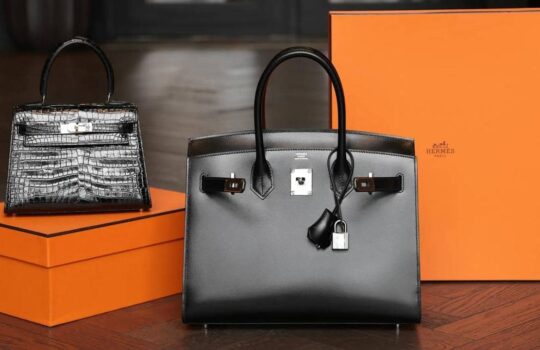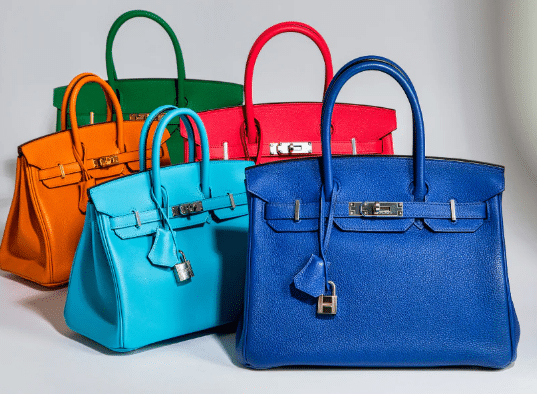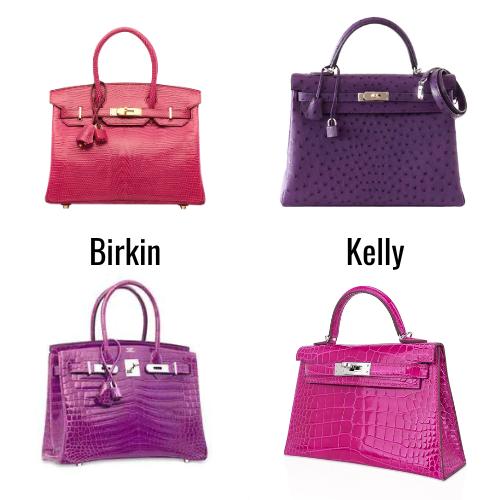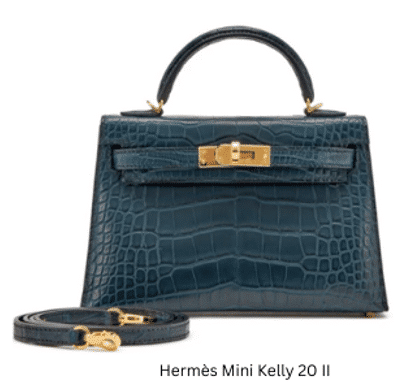A Comprehensive Guide to Hermès Leathers and Skins
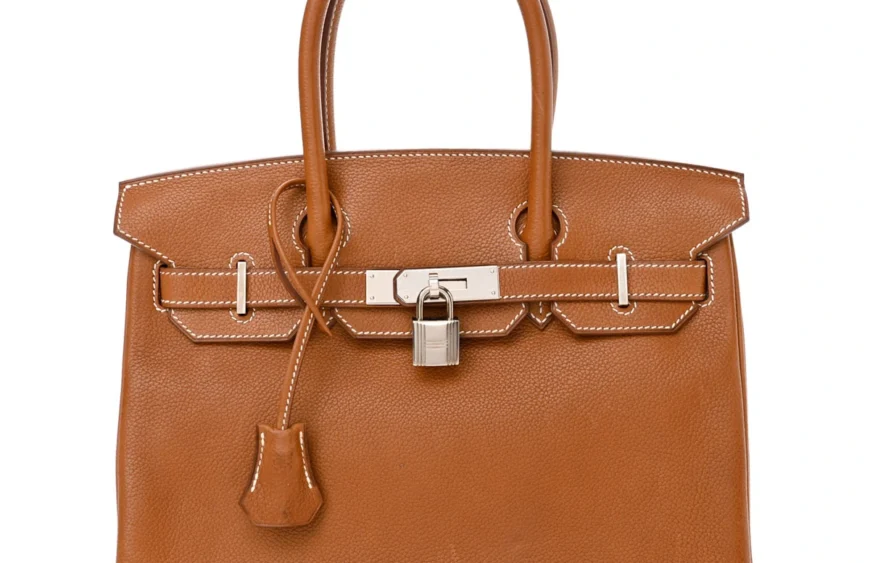
The classics and iconics
Togo
Togo is undeniably the most popular leather offered by Hermès, comprising almost 15% of all Birkin and Kelly bags sold at auction. Introduced in 1977, Hermès Togo leather is favorited for its chic design and durability, making the perfect option for everyday use. It’s a natural, pebbled grained leather and is recognized for its distinct visible veining and slightly slouched appearance when used in handbags. Togo is a soft and supple calfskin, however because of its texture, Togo is less likely to show scratches than many of the other leathers and does not wear easily. The iconic design of the leather makes it easy to clean and maintain, with most spots blemishes requiring only the gentle wipe of a damp cloth to be removed. Due to its durability and slouched appearance Togo leather is most popular in the Birkin size 30cm and above.

Epsom

Box Calf

Evercalf
Evercalf is a very similar leather to Hermès Box Calf, and at first glance the two are interchangeable. The difference in the two leathers is only apparent in tactility, where Evercalf is significantly softer and smoother, which is reflected in the higher price tag. Additionally, it is less prone to scratches and scruffs making it a more viable option for everyday use and a great alternative if you love the smooth look and feel of Veau leather.

Chèvre de Coromandel

Chèvre Mysore
Swift


Taurillon Clemence
Taurillon Clemence, also known as Taurillon Clemence or TC, is most commonly referred to simply as Clemence leather. It was first introduced by Hermès in the 1990s, and today remains one of the most popular choices. It is a similar leather to Togo, both being a natural grain leather, although it lacks the distinctive veining and is thought of as a cross between Togo and Swift, combining the best features of both. It has a semi-matte, smooth pebbled-grained surface that creates a slightly slouchy and relaxed handbag. It is smoother and has slightly larger veins than Togo, however this unfortunately makes it slightly less durable.

Barenia Natural
Barenia leather has been a Hermès favorite for over half a century now, being first featured in bags in the early 1970s. It is a smooth calfskin with just the right amount of gloss, offering a silky-smooth, buttery look and beautiful vibrance in natural leather colors such as Brown, Tan, and Russet. Additionally, the hint of gloss causes the leather to absorb oils from the skin, giving the leather a lovely patina over time. Barenia leather makes for great day-to-day use, being both scratch and water resistant, allowing Hermès to utilize it in sandals, belts, and small leather goods as well as bags.

Tadelakt
Veau Tadelakt is one of the ‘lesser known’ leathers offered by Hermès (of the most popular ones), as it is easily and often confused with Box Calf and Swift, due to their similar tactility and appearance. Tadelakt is another smooth and glossy calfskin, which is susceptible to damage from scratching and blistering when exposed to water. However, like Swift – and unlike Box Calf – Hermès Tadelakt leather has no visible grains and offers high color absorption, making it a popular choice when Swift is unavailable. The main differentiation between Tadelakt and it’s ‘sister leathers’ are that Tadelakt is shinier and stiffer than Swift leather, making it slightly heavier and therefore a preference in smaller Birkin and Kelly models. It is described as a Hybrid between Box Calf and Swift, being closer to Swift in appearance but closer to Box Calf in terms of tactility.

Exotic and Exclusive Leathers
Alligator
Hermès source only the highest quality hides for their leathers, and this is at no exception with exotic leathers. Their Alligator Mississippiensis leather is solely sourced from the Mississippi River region of the US, hence the name, and due to the rarity of larger hides in comparison to crocodile, it is more commonly used for smaller bags such as the Mini Kelly (Kelly 20), Kelly 25 and Birkin 25. It can be distinguished from Crocodile leathers as it lacks the “pore”, which looks like a small dot inside each of the scales, and it is accredited by a Square stamp. Hermès Alligator leather is distinguished from Crocodile leathers by it’s fairly even, square-ish shaped scales, although the scales get smaller as they extend outwards to the edges of the bag. It is offered in either a Matte or Shiny (Lisse) finish, both being achieved through a meticulous technique.
The finish of Shiny Alligator is created by buffing the skin with a stone until a sheen develops, giving the bag a gorgeous shine-like appearance that can hide small imperfections.


Niloticus Crocodile
Crocodile leather is differentiated from Alligator by the pore, which appears as a small dot present in the center of each of the scales. Hermès source their Niloticus Crocodile exclusively from the Nile Region of Zimbabwe. Niloticus leather has the largest scales of all of the crocodile skins Hermès utilize in hand crafting their bags, and in comparisonto Alligator the scales are more oblong shaped (rectangular with circular edges). Bags crafted from this precious skin are denoted by the •• (two dots) stamp. Niloticus crocodile is remarkably durable, however alike Alligator (and other Crocodile skins) it is a precious material that requires proper care, and is extremely susceptible to water damage. As with Alligator, it is offered in either a Matte or Shiny (Lisse) finish, both being achieved through a meticulous technique.
The finish of Shiny Niloticus Crocodile is created by buffing the skin with a stone until a sheen develops, giving the bag a gorgeous shine-like appearance that can hide small imperfections.

Porosus Crocodile
Porosus Crocodile is a more expensive alternative to Niloticus, due to its smaller, more symmetrical scales that create a resplendent design that is one of the most coveted of Hermès leathers, and the most esteemed of their exotic leathers. It’s favorited over Niloticus as its smaller scales are often perceived as less flashy, however this should be taken lightly, as scale size and style of Niloticus and Porosus leather bags can vary fairly significantly from bag-to-bag. Porosus leather bags are denoted by the ^ (carat) stamp, and like Niloticus come in Lisse and Matte finish.
The finish of Shiny Porosus Crocodile is created by buffing the skin with a stone until a sheen develops, giving the bag a gorgeous shine-like appearance that can hide small imperfections.

The finish of Matte Porosus Crocodile is created by rubbing the skin with felt, and this requires the skin to be flawless as if there are any small blemishes these will become apparently visible. Because of this, Matte Porosus leather bagstend to come at slightly higher prices than the Shiny (Lisse) alternative.

Morletti Crocodile
Despite the general consensus that Porosus is the most expensive, and most exclusive, of the Crocodile leathers offered by Hermès, there is another which is more expensive and far rarer. Morletti Crocodile, also titled Morlet’s Crocodile, is arguably one of the rarest Hermès leathers available – with some experts claiming it is equal to or rare than Himalaya, of which Hermès only produce a handful yearly. As a result, it is treated with a heightened sense of exclusivity, and unlike the Himalaya it is majorly unknown and unspoken of by the public and even established Hermès connoisseurs, with only Rare and Limited Edition Collectors and Hermès executive insiders having comprehensive knowledge and true appreciation of this allure leather.

Morletti Crocodile is native to Belize, Guatemala and Mexico; with Hermès exporting it for use in their bags since 1997. It is described as being very similar to Porosus in appearance, with slightly smaller, flatter, and more even scales. It is denoted by the ••• (three dots) stamp and unlike other crocodile skins, has scales that appear as a cross between shiny and matte, achieved with a covert technique known only to Hermès.

Himalaya Crocodile
Despite a common misconception due to the name, Himalaya Crocodile does not originate from the Himalaya Mountains, as the cold ,harsh temperatures of this region make it uninhabitable to any crocodile species. Unlike Porosus, Niloticus, and Moreletti the Himalaya Crocodile is not actually a species of crocodile but a remarkably rare design offered by Hermès for their Crocodile leather Birkin and Kelly handbags. It can be made with either Porosus or Niloticus, and is an exclusive color that Hermès offers which takes inspiration from the Picturesque snowy mountains of the Himalayas. The reason Himalaya bags sell at multiples of typical Crocodile bags is because of their rarity and the scrupulous dying technique that Hermès employs to give the bags their signature design.


As with Porosus and Niloticus, Himalaya bags are offered in a Shiny (Lisse) or Matte finish, however unlike with other Crocodile leathers the difference in price between Matte and Lisse is more significant, due to Matte Himalaya Birkin and Kellys requiring an absolutely perfect hide, as even the smallest blemishes would be visible after the meticulous and expensive dyeing and buffing processes that create the finished masterpiece. Because of the higher cost of Matte Himalaya bags, more of them are made with special finishes than Lisse, such as Diamond Encrusted and Solid Gold Hardware.
Caiman Crocodile
Despite its name, Caiman crocodile is not actually made from Crocodile skin but rather a rare reptile, native to Central and South American swamps and marshes. Today, this lustrous leather is only available from Hermès in Rare Vintage handbags that were crafted before the 1990s. Hermès ceased production with this leather due to the scarce availability of quality supply. Vintage Caiman handbags can be distinguished by the ○ (circle) next to the Hermès stamp., and because they are only available from Hermès in Vintage models they are one of the highest value Hermès bags sold at auction.

Polished Lizard (Varanus Niloticus)
Hermès polished lizard bags are crafted from the Varanus Niloticus, which is sourced from the same region as Niloticus Crocodile – the Nile River in Zimbabwe. The scales tend to be slightly larger than Ombre Lizard, however they are still minuscule in comparison to Alligator and Crocodile leathers. Polished / Niloticus Lizard is cheaper than Ombre due to its greater availability. As with Alligator and Crocodile skins it is offered in both a Matte and Shiny finish, however the small scales give the Matte finish an appearance that is still slightly shiny. Niloticus Lizard is denoted by the — (single hyphen) stamp.


Ombre Lizard (Varanus Salvator)
Ombre Lizard is the most expensive Exotic leather made from Reptile that is currently being produced by Hermès. Ombre Lizard bags, crafted from the Varanus Salvator which originates from the Southeast region of Asia, are esteemed for their smooth and shiny appearance and intricate color pattern of the scales. The term ‘Ombre’ refers to the natural light rings which contrast with the dark shades of the tiny scales. Ombre Lizard is denoted by the = (double hyphen) stamp and is often used a favorite for styles such as the Hermès Constance.

Ostrich
Ostrich is the longest used exotic leather by Hermès, having been used in production of Hermès bags for over a century, starting in the 1920s, being sourced from South Africa. Ostrich leather bags have a very distinct pattern, identifiable by the quills, which give Ostrich leather bags their signature dotted pattern. It is one of the most durable exotic leathers, holding its shape well over time. It comes in a matte finish, and is offered in a range of bright colors, including colors exclusive to the particular leather.
Interestingly, unlike all other exotic leathers Ostrich is not denoted by a special stamp aside the Hermès stamp and a CITES certificate is not required for import into the US. Although Hermès has not said publicly what the reason behind this is, there is speculation that this is because Ostrich is not considered as Exclusive as the other exotic leathers.

